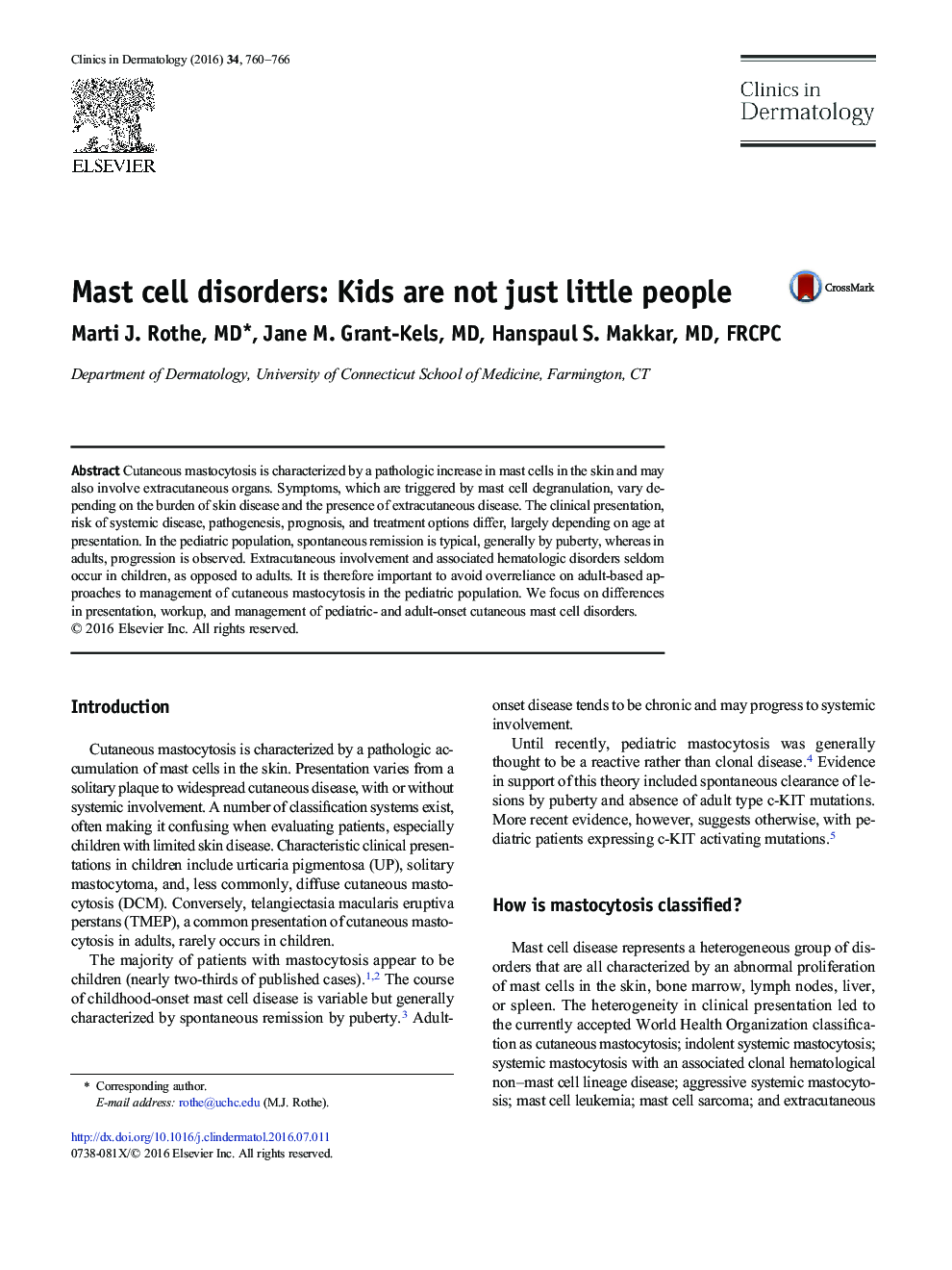| Article ID | Journal | Published Year | Pages | File Type |
|---|---|---|---|---|
| 5645725 | Clinics in Dermatology | 2016 | 7 Pages |
Cutaneous mastocytosis is characterized by a pathologic increase in mast cells in the skin and may also involve extracutaneous organs. Symptoms, which are triggered by mast cell degranulation, vary depending on the burden of skin disease and the presence of extracutaneous disease. The clinical presentation, risk of systemic disease, pathogenesis, prognosis, and treatment options differ, largely depending on age at presentation. In the pediatric population, spontaneous remission is typical, generally by puberty, whereas in adults, progression is observed. Extracutaneous involvement and associated hematologic disorders seldom occur in children, as opposed to adults. It is therefore important to avoid overreliance on adult-based approaches to management of cutaneous mastocytosis in the pediatric population. We focus on differences in presentation, workup, and management of pediatric- and adult-onset cutaneous mast cell disorders.
